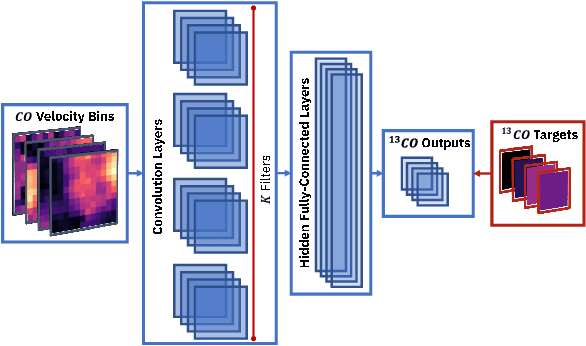Deep Learning Models of the Discrete Component of the Galactic Interstellar Gamma-Ray Emission
Paper and Code
Jun 06, 2022



A significant point-like component from the small scale (or discrete) structure in the H2 interstellar gas might be present in the Fermi-LAT data, but modeling this emission relies on observations of rare gas tracers only available in limited regions of the sky. Identifying this contribution is important to discriminate gamma-ray point sources from interstellar gas, and to better characterize extended gamma-ray sources. We design and train convolutional neural networks to predict this emission where observations of these rare tracers do not exist and discuss the impact of this component on the analysis of the Fermi-LAT data. In particular, we evaluate prospects to exploit this methodology in the characterization of the Fermi-LAT Galactic center excess through accurate modeling of point-like structures in the data to help distinguish between a point-like or smooth nature for the excess. We show that deep learning may be effectively employed to model the gamma-ray emission traced by these rare H2 proxies within statistical significance in data-rich regions, supporting prospects to employ these methods in yet unobserved regions.
 Add to Chrome
Add to Chrome Add to Firefox
Add to Firefox Add to Edge
Add to Edge